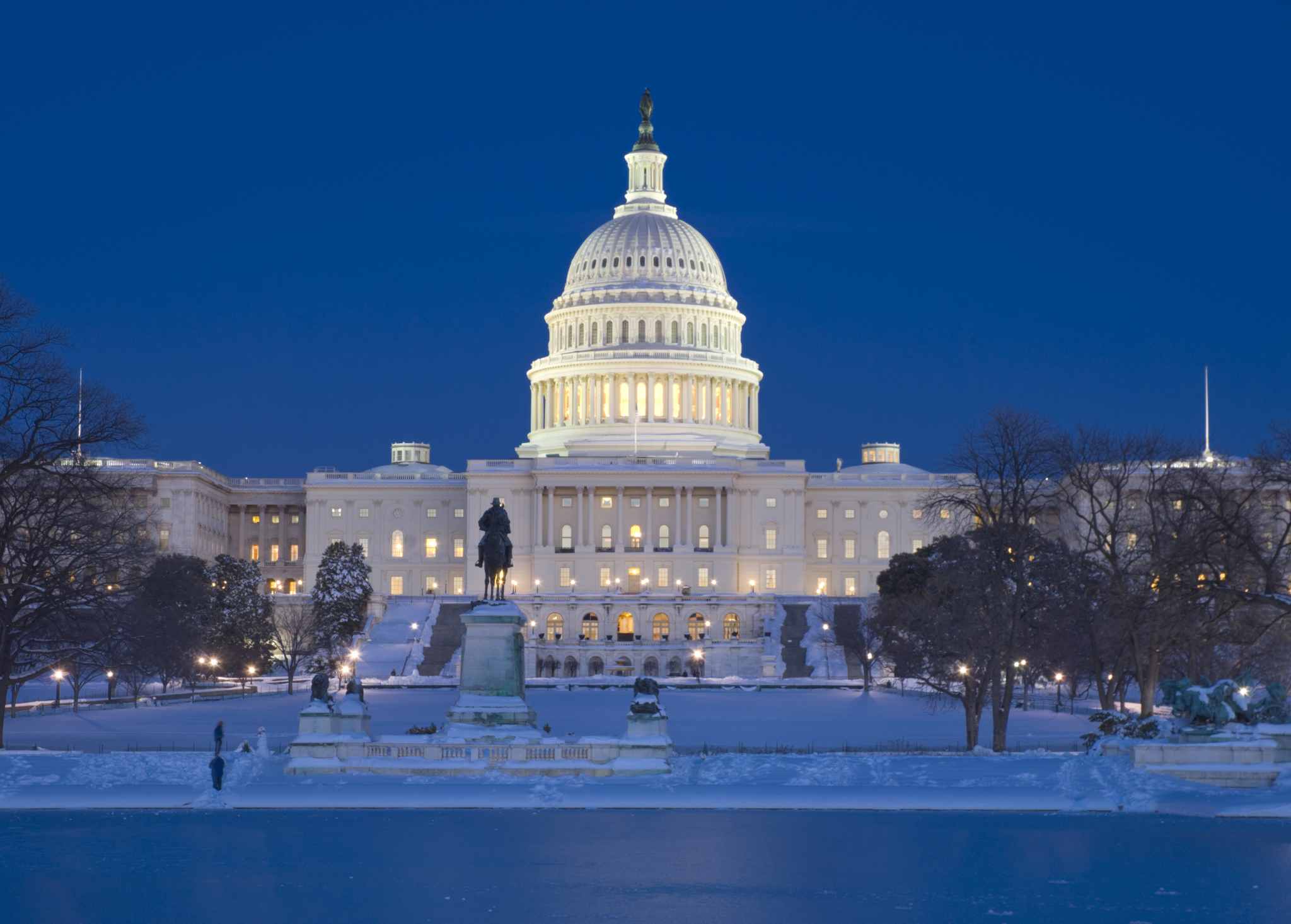
External and internal capture may be reduced through a more logical division of labor between Congress and agencies.
In these hyper-partisan times, one is hard-pressed to identify any areas of overlap between the left and right. One rare exception is the concept of “regulatory capture.” Tea Party Republicans, Progressive Democrats, and centrists in both parties regularly decry the evils of “crony capitalism,” though each side emphasizes different aspects of the problem. A recent forum on regulatory capture hosted by the Administrative Conference of the United States highlighted this bipartisan consensus: U.S. Senators Mike Lee (R-Utah), Elizabeth Warren (D-Mass.), and Sheldon Whitehouse (D-R.I.), as well as a range of academics from across the political spectrum, all pointed to a common malady, but they offered somewhat different sets of cures.
Interestingly, although everyone seems to agree that regulatory capture exists and that it is undesirable, defining this concept has proven enormously challenging. And agreement on a plan for combating capture has proven even more elusive still. Undoubtedly, this is partly a function of the difficulty of drawing a line between “illegitimate” capture and “legitimate” use of the traditional mechanisms for influencing government policy. Indeed, any accountable system of government will necessarily feature some version of capture. Although political idealists such as Jean-Jacques Rousseau believed that citizens of a democracy would check their personal ambitions outside of the voting booth, history has proven the hardheaded realism of the American Constitutional Framers more prescient. Both individual voters and “interest groups,” be they civil society groups or corporations, attempt to shape policy to advance their perceived personal or organizational interests.
In this light, the distinction between “good” and “bad” capture becomes a subjective value judgment. For instance, does a fracking corporation’s lobbying against regulation of carbon emissions represent a malign ploy to despoil the environment or a laudable effort to reduce consumer costs and promote energy independence? Does it matter whether the corporation is a large multinational or a small family business in North Dakota? Is an environmental group’s lobbying in favor of such regulations an exercise in misguided “do-gooderism” that will increase energy costs and harm consumers or a beneficent, selfless act designed to promote a greener, sustainable future? Does it matter if the environmental group is funded primarily by clean-energy corporations that stand to benefit financially from a carbon tax?
Applying the same logic, one also might ask whether “capture” is confined to outside efforts to influence the government. Most people tend to think of “the government” in monolithic terms, but, in reality, it is an enormously complex entity with numerous virtually autonomous components. Although the President is the head of the executive branch, the administrative state consists of dozens of agencies, which are further sub-divided and sub-sub-divided into countless smaller entities. As with any principal-agent relationship, there is a major issue of information asymmetry: The frontline regulators have a far greater grasp of the rules that they administer than does any political appointee or, a fortiori, the President. This balkanized arrangement has many benefits, but it can also breed fierce opposition to any top-down reform effort, such as retrospective review of existing rules. In short, there is a type of “intra-governmental” capture that exists alongside external capture, and whether one perceives it as “good” or “bad” again depends on one’s preexisting normative commitments.
Viewed from this broader perspective, any conceivable system of government must tolerate a certain level of internal capture or external capture, or both. The only surefire approach to eradicating external capture would be to construct a society of completely unaccountable philosopher-kings, but that would ensure total capture by governmental insiders (and it would of course be utterly inconsistent with American notions of republican government and democratic accountability). Alternatively, one might eliminate internal capture by selecting those policies that are most strongly supported by outside entities—in other words, an extreme version of pluralism—or conducting a plebiscite on all governmental decisions. Of course, the former approach would essentially entail selling governmental policy to the highest bidder, as well-funded entities will always be optimally positioned to lobby the government. The latter approach, although perhaps appealing in theory, is utterly implausible in practice: California’s disastrous experience with the use of citizen referenda gives some foretaste of how such a scenario would likely play out.
If it is then impossible, or at least highly undesirable, to eliminate either internal or external capture, can government be designed to limit the more pernicious effects of both? I would submit that the answer is “yes,” and that both species of capture might be reduced—though by no means eradicated—by promoting a more logical division of labor between Congress and administrative agencies.
Under the original vision of the administrative state, Congress was responsible for setting overall policy goals—that is, “legislating”—and agencies were tasked with plying their technical expertise to fill in the details—that is, “administering.” The so-called non-delegation doctrine is intended to maintain these separate roles, but the Supreme Court has come to accept that the line is too amorphous to maintain with any degree of precision. And although the Court is likely correct in its conclusion that a judicially enforceable boundary is infeasible, Congress can and should attempt to maintain this distinction as an antidote to capture.
Consider, in this respect, the ill effects of intermingling “legislative” and “administrative” functions. Commentators from the left and right have assailed the 1000-plus page length of many major pieces of legislation, arguing that these laws contain massive giveaways to well-connected industry players, who often manage to procure carve-outs and other special favors. One can perhaps chalk this up to the malign effects of money in politics, but it is unclear whether Congress could effectively legislate at this level of detail even if the companies requesting special favors were not also campaign contributors. Lacking the army of regulatory experts that agencies possess, Congress would generally need to rely on lobbyists to furnish the details. By limiting legislative pronouncements to higher-level articulations of overarching policy, Congress would simultaneously eliminate both the need for relying heavily on outside input and much of the incentive to manipulate the legislative process (although firms would still undoubtedly lobby for overall policies that they deem beneficial).
In other cases, Congress opts for the other extreme: delegating sweeping powers to administrative agencies to regulate in the “public interest.” This is a recipe for external capture, internal capture, or both, depending on the circumstances. Given the high stakes involved, regulated entities will take advantage of all available opportunities to advance their interest. This begins with filing comments during the rulemaking process, extends to challenges of the final rule on judicial review, and ends with requests for a waiver or exemption from the policy adopted. Some agencies are fairly solicitous of these efforts, and others are not. For the latter set of agencies, this may reflect vigilant guardianship of the public interest or complete tone-deafness to legitimate suggestions by private stakeholders to minimize regulatory burdens. Regardless, the end result is a regulatory patchwork that is characterized by overregulation in certain areas, and by weak rules or under-enforcement—or both—in others.
By more explicitly setting forth its policy goals in statute, Congress can help mitigate both external and internal capture of this sort. To this end, Congress should identify the specific problem it intends to solve, establish the rubric by which to measure success, and set forth procedures designed to ensure that the agency meets these goals. For instance, if Congress intends the agency to maximize net economic benefits, it should state this objective, and it should explicitly direct the agency to apply benefit-cost analysis in assessing the rule adopted. If, by contrast, Congress intends to advance some unmonetizable goal, such as preserving natural scenery, it should clearly identify that goal and explicitly state that effectuating that goal trumps considerations of economic efficiency. In my recent article, Market Corrective Rulemaking, I explore how this might work with respect to regulations designed to correct market failures.
Of course, this approach would not completely eliminate external or internal capture, as regulators and regulated entities would continue to duel over the administrative details. But it would at least reduce the stakes of the contest. Furthermore, the scientific and other technical evidence that informs the implementation of regulations would be more objective and less susceptible to manipulation.
At the end of the day, there is no easy fix for eliminating external or internal capture. Both phenomena are corollaries of human nature, and any cure designed to eradicate either would likely prove far worse than the underlying disease. Nevertheless, we can and should strive to contain the more noxious effects of both, and restoring the balance of powers between Congress and agencies seems to be a good place to start.
This essay is part of The Regulatory Review’s sixteen-part series, Rooting Out Regulatory Capture.




